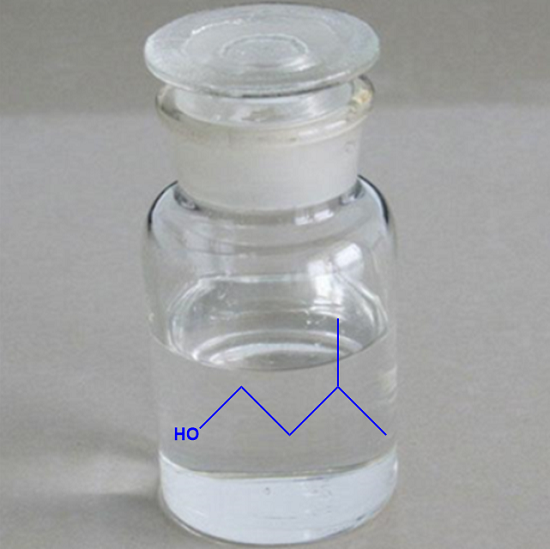The uses of 5-Aminolevulinic acid hydrochloride
Jul 15,2024
Introduction
5-Aminolevulinic acid (5-amino-4-oxopentanoic acid, ALA) hydrochloride is widely used for fluorescence diagnosis and photodynamic therapy of malignant tumours and treating skin and other diseases. It is synthesized, in particular, by the catalytic hydrogenation of 5-nitrolevulinic acid methyl ester (NLA ME) on palladium catalyst in the acidic environment of methanol:
However, in the NLA ME electro reduction, the total yield of the process ALA by stages of reduction and separation from a solution was 61–66%, and the content of the main substance was about 90%, whereas, in the catalytic synthesis, these characteristics reached 75–80 and 90–96%, respectively. Methylammonium and ammonium chloride, with a primary content of the latter, were the main by-products formed during the electrosynthesis of ALA, which reduced the yield and quality of ALA. These impurities are also formed in the catalytic hydrogenation of ME FA but in smaller quantities[1].
For producing 98.0–99.0 ALA, the process ALA is purified by recrystallization from hydrochloric acid (1: 1) . However, a single recrystallization can be sufficient only when the content of the main substance in ALA is 94.5–95.0%, in this case, the yield of ALA is 70.0–75.0%. In treating ALA containing 90.0– 92.0%, two recrystallizations are required, and the yield of purified ALA is reduced to 45.0–50.0%. Three recrystallizations are applied in the case of the content of the main substance 86.5–89.0%, and then the overall yield of ALA is lowered to 25.0–30.0%.
Optimal conditions for electrodialysis purification of 5-aminolevulinic acid from ammonium chloride were found: the concentration of 5-aminolevulinic acid 200–270 g L–1, the concentration of ammonium chloride 20–70 g L–1, current density 1.5–2.0 A dm–2, the linear velocity of the solution in the purification chambers 3.0 cm s–1, the temperature 20–30°C. Under these conditions, the increased content of the main substance in the 5-aminolevulinic acid to 92.1–97.1% with a total yield of 86.0–92.3% is reached.
Nonmelanoma skin cancer with photodynamic therapy
Common photosensitizers used for actinic keratoses (AKs) include the prodrugs 5-aminolevulinic acid (ALA) and methyl aminolevulinate (MAL). After uptake of ALA or MAL by AKs, with subsequent conversion of the photosensitizer to protoporphyrin IX (PpIX), illumination activates PpIX, causes aerobic formation of reactive oxygen species, and ultimately results in apoptosis and necrosis. PpIX has maximum absorption at the blue light region, while red light provides maximal tissue penetration. PDT with photosensitization using 10% ALA gel was approved by the Food and Drug Administration in 1999 for treating AK in field-directed treatment areas measuring 20 cm2 or smaller. A meta-analysis of 25 studies investigating 10 treatment modalities for AKs showed PDT with ALA to be the most effective treatment based on clearance 12 weeks after treatment. The use of PDT in NMSC has been documented in the literature[2].
Fluorescence-guided neurosurgery
Exogenous 5-aminolevulinic acid (5-ALA) has been used in fluorescence-guided neurosurgery over the past 15 years to improve gross total resection rates in gliomas. Preoperative administration of 5-aminolevulinic acid hydrochloride (Gliolan) at appropriate dosage causes accumulation of fluorescent protoporphyrin IX (PpIX) in glioma cells without affecting the normal brain tissue[3]. The surgeon can differentiate pink tumour tissue from blue brain tissue in visible violet. The current Therapeutic Goods Administration in Australia approves Gliolan to resect glioblastoma multiforme. 5-ALA is a precursor to PpIX in the porphyrin production pathway, necessary for the production of haem, an essential cofactor for growth in all eukaryote cells. Haem biosynthesis in fungi occurs via the same initial pathway as in mammals. It is known that exogenous administration of 5-ALA in fungi leads to PpIX-mediated fluorescence. Despite this, no previously reported cases of intraoperative fluorescence of fungal abscesses have been reported.
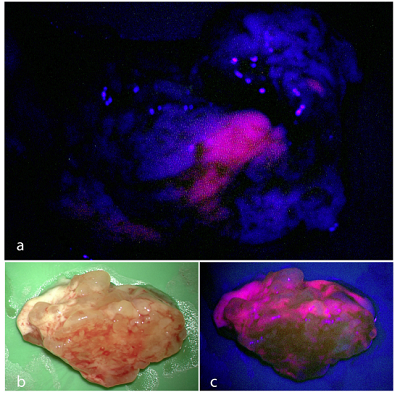
Fluorescence-guided tumour resection in neurosurgery was first described in the 1940s. The use of Gliolan in resecting gliomas has been present for the last 15 years and has shown increasing rates of gross total resections. Although there are varying results about overall survival benefits, the current recommendation is for maximum safe resection. Various mechanisms are attributed to the higher 5-ALA uptake into cerebral neoplasms. This includes blood-brain barrier disruption, overexpression of membrane transporters, altered metabolism of haem in tumour tissue and increased cell density. One pitfall of Gliolan is that its fluorescence can be confounded with other unrelated pathologies, including other neoplasms such as metastasis, abscesses and even inflammatory diseases such as multiple sclerosis. Fluorescence of a cerebral abscess after administration of Gliolan has been described in infection with Listeria monocytogenes; however, there have been no previously reported cases of fluorescence in C. gattii cerebral infections.
References
[1] A. A. Konarev, E. A. Luk’yanets. “Electrodialysis purification of 5-aminolevulinic acid hydrochloride.” Russian Journal of Applied Chemistry 85 10 (2012): 1550–1553.
[2] Angela Moore MD . “Sustained resolution of nonmelanoma skin cancer with photodynamic therapy using 10% 5-aminolevulinic acid hydrochloride gel: A retrospective case series.” JAAD Case Reports 38 (2023): Pages 148-151.
[3] Waldo Gerard Solis, Mitchell Hansen. “Fluorescence in a cryptococcoma following administration of 5-aminolevulinic acid hydrochloride (Gliolan).” BMJ Case Reports 2017 (2017).
- Related articles
- Related Qustion
- Property, Synthesis and Clinical Effect of 5-aminolevulinic acid hydrochloride Jul 12, 2022
The physiological substance and precursor of the heme synthesis 5-aminolevulinic acid (ALA) is a promising prodrug for photodiagnosis and photodynamic therapy of epithelial tumors.
Sodium thiomethoxide is essential in medicinal chemistry but poses toxicity risks, necessitating stringent safety precautions during handling to prevent harm.....
Jul 15,2024API3-Methyl-1-butanol is the primary constituent of the fusel oil (by-product of alcoholic carbohydrate fermentation).....
Jul 15,2024Organic reagents5-Aminolevulinic acid hydrochloride
5451-09-2You may like
- What is EVA used for?
Jul 10, 2024
- Is it safe to use Ethylhexylglycerin
Jul 3, 2024
- How to synthesis 1,4-Dioxane?
Jul 2, 2024
5-Aminolevulinic acid hydrochloride manufacturers
- 5-AMinolevulinic Acid Hydrochloride
-
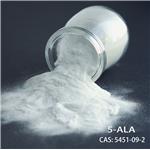
- $810.00 / 1kg
- 2024-07-06
- CAS:5451-09-2
- Min. Order: 0.10000000149011612kg
- Purity: 98%
- Supply Ability: 1 tons
- 5-Aminolevulinic acid hydrochloride
-
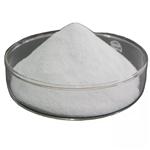
- $200.00/ KG
- 2024-06-19
- CAS:5451-09-2
- Min. Order: 1KG
- Purity: 99%
- Supply Ability: 20 tons
- 5-Aminolevulinic acid hydrochloride
-
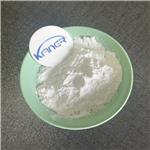
- $0.00 / 1kg
- 2024-05-29
- CAS:5451-09-2
- Min. Order: 1kg
- Purity: 0.99
- Supply Ability: 50000kg




